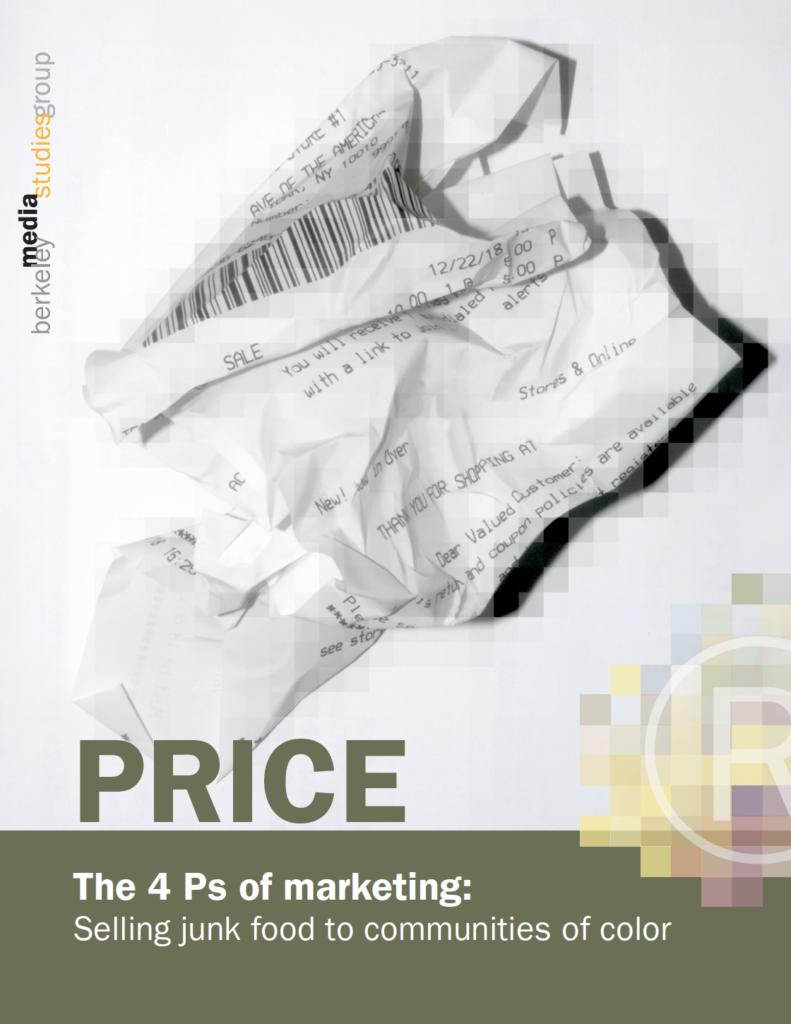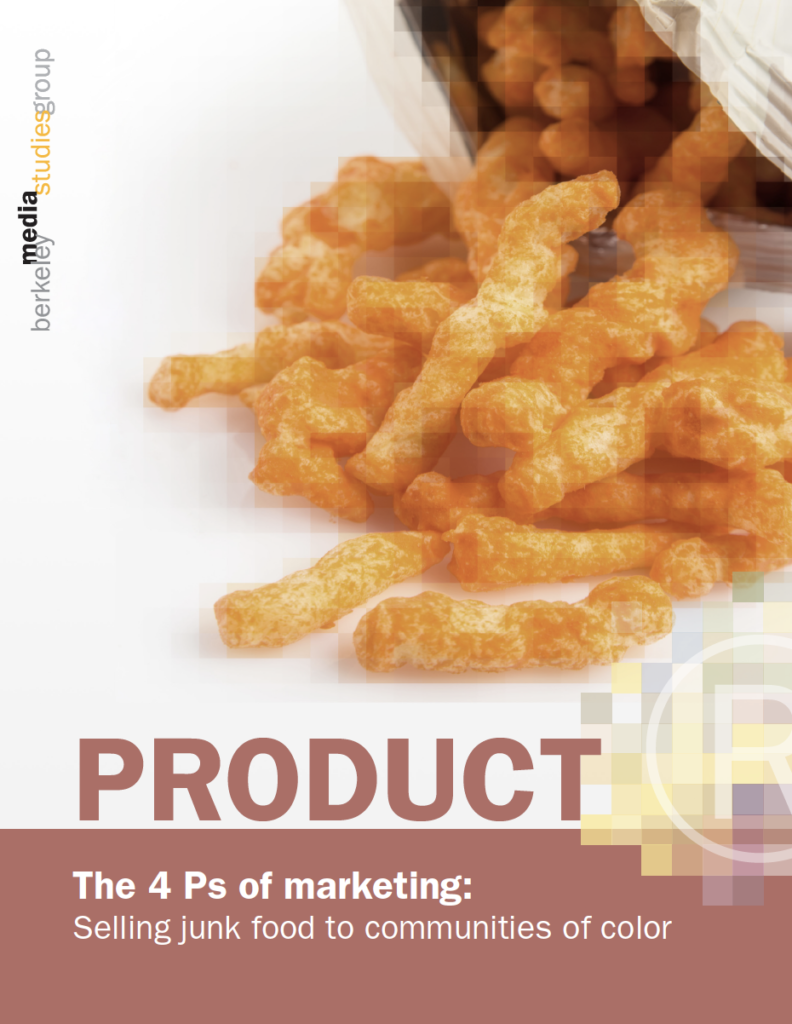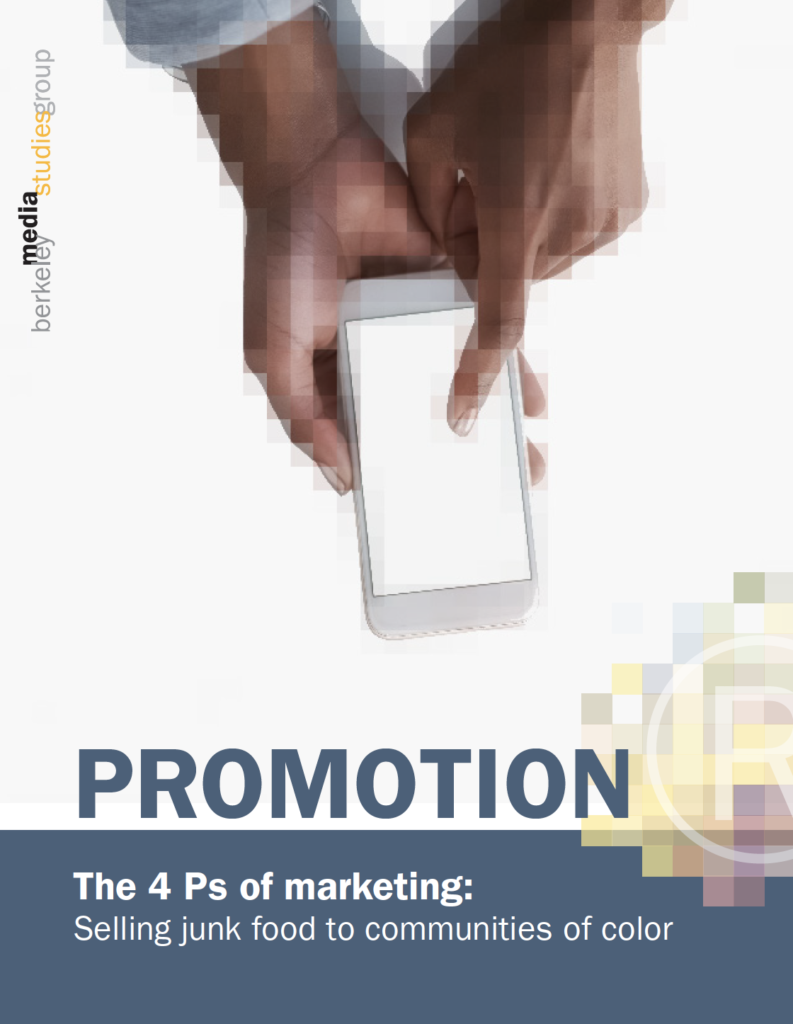Junk food marketing: New resources show how the industry targets communities of color
by: Daphne Marvel
posted on Thursday, July 25, 2019
Drive within a few miles of a fast-food restaurant or grocery store, and a mobile message could pop up on your phone with a coupon enticing you to stop by — but don’t expect it to be an ad for kale or bananas. In 2018, McDonald’s partnered with the navigation app WAZE to send promotions and turn-by-turn directions to travelers within range of a McDonald’s billboard. Not to be outdone, Burger King then used geolocation technology to send mobile coupons through their app, offering a 1-cent Whopper to any customer approaching McDonald’s. These geotargeting tactics are among the many ways that food and beverage marketers reach communities with advertising for mostly unhealthy products.
Junk food and sugary drink marketing contributes to rising rates of obesity and diabetes, which is why public health advocates are increasingly concerned not only about what is being marketing but also about which consumers are being targeted. Junk food and soda companies often aggressively market their least healthy items to low-income communities and communities of color, especially youth — the very groups that have been the hardest hit by the current epidemic of nutrition-related diseases.
A new series of briefs from Berkeley Media Studies Group explores how the food and beverage industry strategically sets prices, leverages cutting-edge technology, and exploits cultural sensibilities to build brand loyalty and sell unhealthy products to low-income communities and communities of color.
“Targeted marketing is a health equity issue — one that needs a public health response,” BMSG Director Lori Dorfman said. “Soda and fast-food companies have been following the tobacco industry’s lead and using many of the same marketing practices with the explicit goal of increasing junk food consumption among African Americans and Latinxs.”
BMSG’s four new briefs examine how the food and beverage industry engages in target marketing using what’s known as the 4 Ps (Place, Price, Product, and Promotion), provide examples to illustrate how target marketing contributes to health inequities, and offer recommendations for how advocates can combat this all-too-common practice. Below, we offer a few excerpts.
Place
Billboards and banners are staples of place-based marketing. However, in our current digital age, place is becoming more and more virtual, experienced on a laptop, tablet, or smart phone. New advances in digital marketing -— including the previously discussed examples of geotargeting from McDonald’s and Burger King — allow marketers to track and target consumers and gather demographic characteristics. This digital targeting is likely to disproportionately impact youth of color, as they are greater users of smart phones and other mobile technology than white youth.
In a more traditional example of place-based marketing, Coca-Cola literally covered the streets of Miami’s Calle Ocho 2015 festival, which celebrates the city’s Latinx community, with banners and logos. Coke, which was the official soft drink of the festival, also ran an extensive local TV, radio, and social media campaign.
Price
Fast-food restaurants and the wider food and beverage industry carefully set prices — through dollar menus, for example — to appeal to certain groups in certain neighborhoods. However, many of the foods and beverages marketed to low-income communities and communities of color — and sold at low prices — are also low in nutrients and high in sugars, salt, and fats. With digital marketing that goes directly to mobile devices, prices can also be set for individuals.
This imbalance in the cost of healthy versus unhealthy food is perhaps most evident in Indian Country. A 2016 report from the First Nations Development Institute showed how most healthy food staples, such as eggs, milk, apples, and tomatoes, cost considerably more than the nationwide average. One item they found less expensive: Cheetos.
Product
Although food and beverage companies market junk foods heavily through advertisements and social media promotions, the item being marketed, or the product, is itself a form of marketing. Companies develop products that are specifically designed to entice people of color.
Food companies see communities of color, particularly youth, as trendsetters in entertainment, fashion, and even food. For companies designing products for communities of color, their wider crossover appeal makes them an appealing target. This may account for what seems like a recent explosion of potato chip brands and other salt-laden snacks featuring spicy flavors ranging from Sriracha sauce to pico de gallo salsa.
Promotion
Whether its McDonald’s using Instagram influencers to tout a new menu item, or a more traditional Pepsi billboard, promotion is what often comes to mind when people think of marketing because it is so visible.
In one example of influencer marketing, McDonald’s partnered with Instagram influencers to create sponsored posts to promote its McCafé beverages, buttermilk crispy tenders, and fries. The influencers used branded hashtags, displayed the McDonald’s logo, and tagged the official McDonald’s Instagram account in their posts. These young influencers included a Latina actress and an Asian American YouTuber with large social media followings. Children and teens are particularly susceptible to influencer marketing, as these ads are coming from prominent social media figures they follow who also frequently post non-sponsored content. This form of advertising can make it impossible for even the savviest children (or adults!) to understand they are being pitched the latest products, including unhealthy foods and sugary drinks.
The 4 Ps work together to promote unhealthy products at carefully set prices to people online and in specific neighborhoods.
Because food and beverage companies often promote diversity through their hiring practices, scholarships, and sponsorships, and because communities of color historically have been underrepresented in media, the rise of inclusive marketing materials may seem positive, letting the harms of target marketing go unnoticed. However, as important as inclusion is, it does not give companies the right to engage in marketing that increases health risks for groups that already experience worse health outcomes.
What, then, can be done to reduce target marketing? For starters, public health practitioners and advocates must be aware of these harmful marketing practices so that they can address the problem. Groups like the Youth Food Educators program and The Bigger Picture are combating the junk food industry through youth-led action. And other organizations like the Center for Digital Democracy and Color Of Change have urged the Federal Trade Commission to investigate discriminatory marketing practices and create guidelines that better protect consumers in today’s digital age.
To learn more about the marketing tactics used to sell junk food to low-income families and communities of color, as well as ways to address it, read our four target marketing briefs in full: Place, Price, Product, and Promotion.
Have you seen fast food or sugary drink marketing that targets communities of color? We want to hear from you! Share your examples with us at info@bmsg.org, on Facebook, or on Twitter @BMSG.







